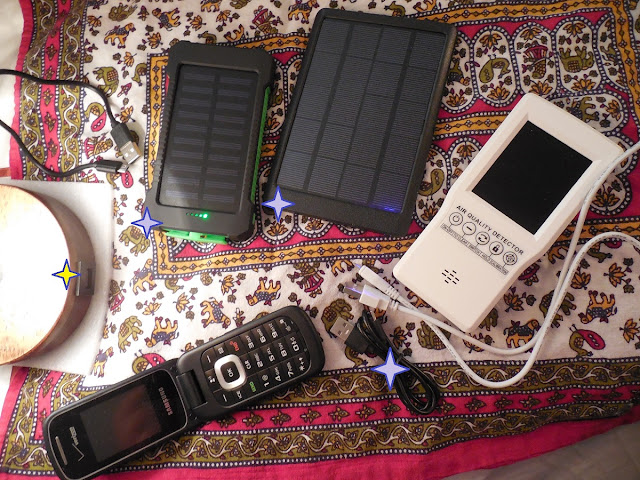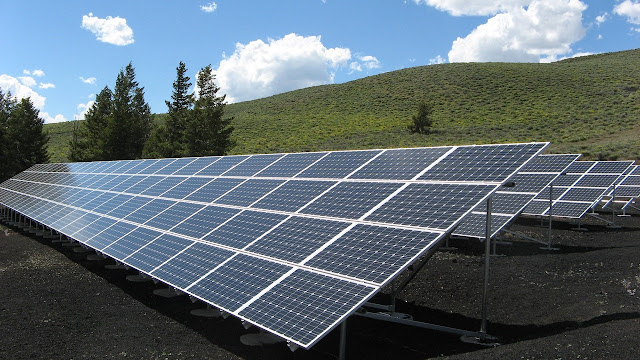Solar Power Banks, a Low-Cost Emergency Backup
Updated March 5, 2021, see the end of the article.
With some people in Texas still without power after several days and accusations flying, it's a good reminder to consider the value of backup power systems even if it's just enough to keep your phone functioning. Fortunately, these little power banks are affordable and, if you're a fan of gadgets, you will notice them in technical articles or ads. If you're not the type to look at gadgets, then you can easily miss this gem of solar power convenience. In this article I'll compare two models I picked up from Newegg.com, an online electronics store with a good reputation.
Since I don't see these everywhere, and the prices were very low, I considered this purchase to be an experiment. But it worked out better than I expected and made me wonder why these aren't mainstream. Everyone's encountered moments when their power has gone out briefly. These devices can save you from having to start your car in order to charge your phone.
I'll call the Green-sided device G, and the Blue LED device B. My experience in using them is that they're strikingly similar, they both have two USB-out ports and one mini-USB input (in case you want to quickly charge it up from your car or in this case, a lamp port). I chose these two because they have different solar panels.
They both said they come with a flashlight, but I can't figure out how to use the flashlight on Solar Bank B, so only G has what I'd call a useful flashlight feature. The flashlight is important in a power outage, but it's also important because if you get a "slow" device, the battery can be renewed somewhat by charging/discharging it. Without a strong light, there's no quick way to discharge it, other than connecting lots of devices up to it.
They don't seem to offer brand names for these devices. I suppose that's good, it means the costs are kept low. As long as they work, I'm not bothered. But it makes it hard to specify what item I was using, so I tried to give many descriptions, and a link.
Solar Power Bank B
 |
| The manual for B |
Model#: #CDB-CH038-Black
Currently $16.00
https://www.newegg.com/p/39G-00ZU-00047
After about three days of use, Solar Bank B is a bit slow still. It may just need a few charge/discharge cycles to wake up. I also can't find the flashlight function. I've tried holding the power button in for 15 sec, I've tried pressing it twice, then three times, quickly. No help. The four LEDs that tell you how much power it has seem independent of the power button. In fact, other than turning it on when I first got it, the power button hasn't seemed to do anything since.
It got just as much sun as G, but it didn't get as much charge out of it. I thought maybe there was an issue with the battery in it. But there wasn't, I plugged it into my lamp (see below), and it charged up in a few hours. By that time, my phone was charged up though. I'll have to wait for the next time I need to charge my phone. As you can see, I"m a phone minimalist, so that could be a week or longer.
It's probable that this device is fine, and I will continue to charge and discharge it to see if it recovers. I included a pic of the manual to show the translation issues. I like the politeness of translations from Chinese, but often the meaning is lost. I can't make head or tails of Warning 3, for instance, but it sounds important.
More information is given for this product:
Power Capacity: 900000mAh
Battery Type : Li-polymer Battery
Output Interface : 5V/2.1A
Support Quick Charge Technology : One-way Quick Charge
This is why I think B is actually OK, it's just that it's a much higher capacity device (G has a bit more than half the capacity), slightly different battery type, and more logic in its circuits. Quick Charge seems to confirm that. In any case, it definitely earned its extra $2 price tag. Li-Poly all by itself attracted me as a customer, because it could be less toxic and may not use cobalt. It's actually a myth that Li-Poly doesn't use cobalt, only certain types don't. Cobalt is politically dicey.
Solar Power Bank G
Of the two, this one worked better, straight out of the box. Both devices showed up about half charged. Both got about 6 hours of semi-direct sun. But this one fully charged from that sunshine, and recharged my phone in less than 3 hours. OK my phone is minimalist. But that's still impressive for something this size. I can't include the manual this time because it's written on the box, a transparent box, and it's beyond my photography skills to capture it. It's very general. But G is easy to figure out.
Once you know there is a power button you can look for it. One of the corners has it. Press and a light goes on and off, at the back of the device, opposite from the solar panel. And it's bright! Just the thing for a camp out. It has a clip on that side, so if you are backpacking, you can clip it to the outside of your shirt or your backpack and let it gather sunlight while you hike. Now that I know what it looks like, I've seen ads for this particular model, it seems to be targeting hikers.The chassis is rubberized and shock resistant, and the USB panel has a flap that you can press into the openings to help make it more water resistant. For an easy to use device that "just works" or if you're giving this as a gift to an elderly relative who might need it in an emergency, this is the better bet. There is less detailed information on this one in the listing on Newegg and no manufacturer's website to look at. But the device works as advertised and you can't beat the price.
DIY How-to
The idea of a USB charger and lamp together, is found in many DIY videos that people in the developing world may use, or that children may use to learn more about electronics. A couple of examples are found below.
USB Charger on a (not solar) Lamp
A few years ago I noticed that the popularity of Airbnb was driving some innovation in ordinary housewares, like lamps and clocks. Now I could find them with USB chargers. You can simplify charging by getting one of these if you happen to need a lamp or clock anyway, or if it means more accessibility. I'm not a big fan of bending and reaching for the wall plug. I used this to charge up Solar Bank B when solar didn't seem to be enough for it, or it seemed slow at first.
Minimalist charging lamp (not solar)
Currently $24.99
https://www.amazon.com/Cotanic-Minimalist-Charging-Bedrooms-Nightstand/dp/B07TZGST9V/
A Few Thoughts
In general, with rechargeable batteries, that live inside these solar devices, you don't want to just buy it and then put it in an emergency kit and forget it's there. Rechargeable batteries need to be used. They will self-discharge, but they do it slowly. At least once every three months, charge and discharge this if you buy it. And never let rechargeable batteries get completely discharged, never store them when they are low in power. Always store them charged.
Solar power banks are basically rechargeable batteries with a solar panel attached, a logic board to charge the batteries via solar or USB power, and charging slots for your devices. They seem very high tech when I say it that way. But as the DIY shows, it's a fairly simple project to create one, if you know the components you're buying.
If you have a lot of phones/tablets/devices it's a great idea to have one of these to offload the charging duty from your laptop or PC. As well as, maintain charge, without needing the car, during the occasional outage. It's great for vanlife, attempting to live off grid, hiking, sending with kids to camp, and it's cheap enough that if it gets stolen, who cares? Buy another for less than $20.
I'm actually a bit boggled that they're so affordable. A few years ago if you bought a power bank, the kind you plug into a wall, and provides about 5 charges if the power goes out, it cost nearly $100. I have one that provides about 6000mAh. Now a 10,000mAh non-solar power bank is around $30, and the solar ones for "outdoors" use can push $50, assuming you're buying them at an equipment store, and not at an electronics outlet. I realize I bought them from a "seller" at Newegg, and not from Newegg itself, but I don't consider that to be a very large risk.
However, I would urge caution when bargain hunting and consider whether the risk is too much. If the item doesn't work, well, you're out $15, but if it ruins your phone, that can get pricey.
So with that warning out of the way, I hope you do try this. It's a great way to take another step toward energy autonomy. Let me know how it works out.
Update 3/5/2021 - I figured out some more things about Solar Power Bank B (the one with blue LEDs). I had fully charged the bank and was waiting for something to need charging. When I had something, the power bank was already discharged and I couldn't use it. This confused me, I was worried I had somehow destroyed it or it was defective. But it just had no power. Here's what I found out.
If the solar panel senses any light at all, the LEDs are lit, and even though these LEDs are small and dim, they seem to drain the device very quickly. The way to drain it, if you want to retrain the battery is to place it, solar panels up, under any weak lamp that's on 24/7. In a few days it will be drained. I am still testing to see if it holds a charge when placed face down. I only accidentally figured out that the LEDs turn off when you place the Bank upside down on a table. There was no manual.
Then there's the supposed flashlight feature. The LED lights do turn on if you press the button, but only in complete darkness, and then the LEDs automatically time out after 15 seconds. I don't really consider this a "flashlight" but in total darkness it would be better than nothing. Bank G (the green one) on the other hand, I realized that after some more testing, I could get the flashlight to blink out an SOS message. Very handy if you're stuck somewhere and need help. I'm still leaning toward Bank G as an overall design.




